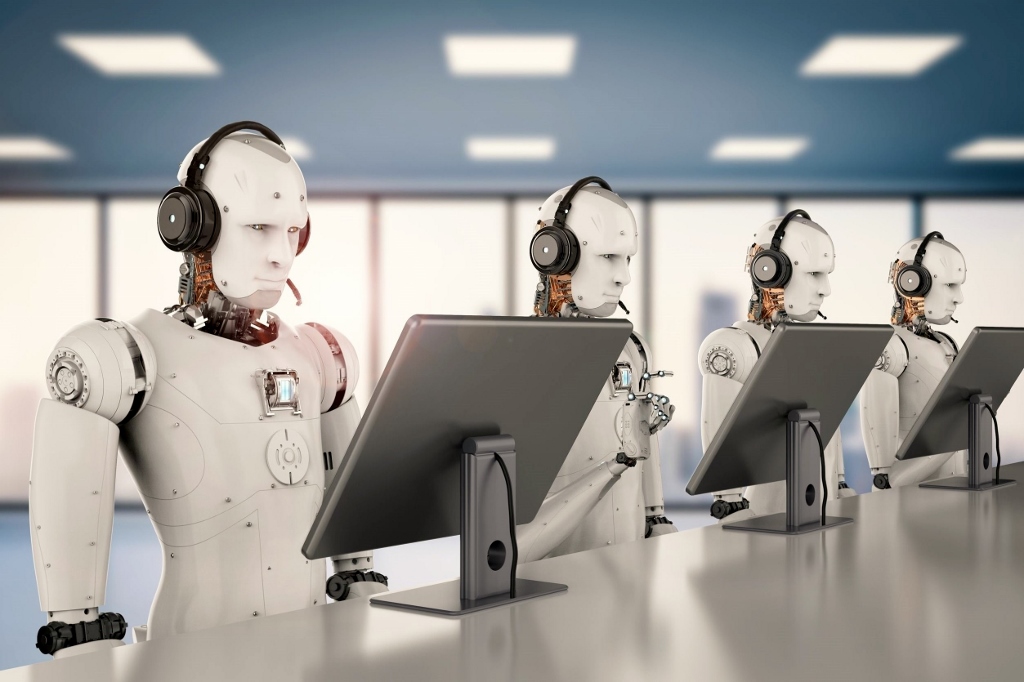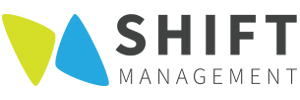Introduction
People, production and profit. These are the three primary gears in the machine that Industry 4.0 claims to revolutionize with the most significant disruptor to the future of work since the first industrial revolution. Through artificial intelligence and the internet of things, industry is experiencing a change so deep, many futurists are predicting that jobs as we now know them will simply disappear. Share on X
This promise of complete disruption is not very reassuring to employees who have for the past 30 years been untrained for new technologies and treated as disposable. Employees are afraid they will not have the opportunity to develop the necessary digital skills to survive in this new reality. Yet humanity must have more important contributions to make to the future of work than simply a less developed prototype of a digital brain. And surely those employees who are not contributing to software engineering have something valuable to offer for the workplaces of tomorrow.
In this article, I show how the digital revolution can be viewed in the context of emotional labour, purpose and mental health. I propose a vision of the future of work illustrated by an example I was privileged to observe. An example that shows that the contributions of those who are not on the digital designing side of the future of work are invaluable to full implementation of technology.
In order to soothe the fears of employee redundancy and provide a way to visualize ourselves in control of our economic futures rather than being “done to” by forces outside our control, I suggest an alternative. By focusing on the context of the whole in a framework of service, we can bring meaning and reciprocity to the conversation. By considering the role of emotional labour in and outside the workplace, we can understand how technology can be in the service of human interests and well being rather than the other way around.
An ecosystem of mutual support that recognizes the roles of purpose and emotional engagement can resource a workforce that for too long has been unacknowledged, handicapped by dichotomies and destabilized by mental health challenges.
I. Industry 4.0 and technology
What is industry 4.0 anyway? Often characterized as “disruptive technologies” industry 4.0 is commonly referred to as the fourth industrial revolution. Its disruptive forces have been identified as Cloud, Artificial Intelligence (AI), Online Security, and The Internet of Things (IoT). As world volatility and insecurity intensifies, it becomes harder to build a profitable business and to compete in a world of co-existing rapid fluctuations, hostile interrupters and interconnectivity.
The weakness in our interdependent systems is that the more interconnected we become, the easier it is for the entire system to collapse. A company I spoke with recently actually controls the complete infrastructure of entire countries. One missed or malicious issue could shut down power, transportation, food distribution, water and all forms of communication instantaneously. These are the increasingly critical stakes within the global business ecosystem.
We are more connected and depend upon our supply chain in deeper and deeper ways. This greater connectivity and collaboration carries with it more risks and greater short and long term implications. We are seeing the rise in sophisticated malicious intent in the digital realm. Even more significantly, the new technologies are personal.
We have relationships with our phones and other devices much as if they were human beings. We can have our identities attacked and stolen through our devices at any moment. Yet we are deeply dependent on them. Technology affects us in all aspects of our lives. It influences and shapes our behavior. It is easy to see why there is concern about a “digital divide” that puts those who can access and manipulate technology effectively on one side with everyone else on sidelines or worse yet, invisible.

II. Emotional labour
In parallel but rarely intersecting research about the future of work, attention has been focused on what is called “emotional labour”. First coined by sociologist Arlie Hochschild in 1983, the concept of emotional labour focused mostly on people-facing industries such as social work or child care, and job roles where sophisticated interpersonal skills are required.
Emotional labour is the caring and support required to train and coach a new employee. It is having one-on-one meetings with employees and solving disputes between workers. It can look like a police sergeant trying to calm an altercation, an emergency response team dealing with the trauma of seeing decapitated and mutilated bodies on a daily basis, an elementary school teacher keeping her class calm and focused on their school work, or a nurse caring for a terminally ill patient. It is dealing with unethical and harmful behaviours, and trying to survive bullying and narcissism in toxic workplaces.
In our daily lives, emotional labour looks like raising children, caring for our households, contributing to the community, and caring for the aged. There is very little effort in life that does not have an emotional component to it, and when that emotional component reaches the point of overload, it moves from the realm of empathy and caring to that of emotional labour.
Much of the research about emotional labour has shown that it is women, lower- and middle-class employees, and those who typically have less power and less education in the workforce who bear the burden of emotional labour. Yet there is also strength and pride from efforts to empathize and to provide basic help to those who are not yet or who are no longer independent.
Taking care of an ageing parent who is dying of cancer can be tedious and exhausting but it is often experienced as transformative and life affirming as well. This is the paradox of emotional labour – it is difficult yet rewarding, but the balance can easily be upset when too much emotional burden is placed on one person or one group of people in society.
There is one particular emotional skill set that is very much sought after in the workplace and is key to the link between industry 4.0 and emotional labour. This skill is the capacity to identify and regulate one’s own emotions and those of others.” It is a complex set of skills that encompasses among others: willingness to interact with others, ability to help them feel comfortable and to express themselves, friendliness, helpfulness, empathy, collaborative communication, good listening, problem solving, personal boundary setting combined with selflessness, ability to contain and calm negative emotions in self and others, and self-control.
Given the current context of less and less social skill inculcation in families, schools and workplaces, this combination of people skills is increasingly sought after and rare. In popular literature, podcasts and YouTube, the skills of emotional regulation and emotional self-care are exploding in popularity. Schools are teaching mindfulness, de-stress tapping, random acts of kindness, empathy programs and breathing techniques to children who are fraught with anxiety and fear. These strategies are helping more and more young people to balance the volatility and lack of connectivity of their daily lives with a sense of control, empathy and self-efficacy. And rightly so.
Wouldn’t you rather work for someone who is helpful, kind and who is interested in you as a person than someone who assigns you tasks and never once cracks a smile? Don’t you want employees who are mature, calm and collected? Wouldn’t you value a workforce that can soothe angry customers and get colleagues to move towards unity of thought? This emotional/spiritual/ethical intelligence skill set will be more and more in demand for the future of work.
It is estimated that no more than 20% of the new workforce will be directly involved in digital work, and even then, they will need to interact with others as part of their job. Assuming all of us need some digital competencies to operate in the industry 4.0 world, that still leaves most of the working population engaged in interpersonal, intercultural, creative, collaborative and conflict resolution to keep everything running smoothly. We will still need to take care of the garbage, the accidents, the renovations, the hair cutting, the repairs and all those other aspects of life requiring skilled trades.
The relationship of emotional labour to industry 4.0 is that the emotional and spiritual needs of human beings are helped and hindered by technology and that technology must serve humanity and not the other way around. Share on X People need to feel some sense of control over themselves and their world to have self-efficacy. Emotional and spiritual awareness and skill are the keys to unlock that capacity.

III. Mental health
Let’s add a third component to the future of work – mental health. The Public Health Agency of Canada defines mental health as:
…the capacity of each and all of us to feel, think, and act in ways that enhance our ability to enjoy life and deal with the challenges we face. It is a positive sense of emotional and spiritual well-being that respects the importance of culture equity, social justice, interconnections and personal dignity.[1]”
If this is the definition of mental health, it appears we are in trouble! HR reviews are seeing an increase in workplace concern with mental health and mental health issues are showing up in children and youth before they enter the workforce. The Mental Health Commission of Canada wrote that in 2010, no less than 23% of youth were showing signs of mental health problems before the age of 14, one in five Canadians experienced some problem with mental heath in the course of a year and one in three would experience ongoing mental health issues throughout their lives.
Statistics Canada’s 2018 numbers for current mental health broken down by age group showed that whereas 5% of adults over 65 self-identified as having poor mental health, this number rose to 9.8% among 18-34 years of age. Note that these numbers are for self-identified mental health. The numbers are likely much higher for those who do not choose to identify as experiencing mental health issues.
According to the Canadian Mental Health Association, over the past 30 years, suicide by girls aged 10-14 has doubled, and risen 50% in girls between the ages of 15-18. Boys are 2-3 times more likely to die by suicide than girls and the rates continue to rise in male adults annually, where the rise in suicide rates in men ages 40-44 over the past 30 years has grown by a staggering 27.4%.
But even in the normal course of the day of the average employee, people have many things in their lives that can interfere with their functioning at work. The Canadian Centre for Occupational Health and Safety website reporting from a New Zealand study in 2003, cites the following impairments to judgement and functioning at work:
- experiencing the effects of substance use, including alcohol or other drugs (legal or illegal)
- treating illness or using medication(s) with side effects (such as radiotherapy causing tiredness, or antibiotics causing nausea)
- having fatigue
- being tired due to long work periods, or working more than one job
- experiencing the disruption to body circadian rhythm caused by shiftwork
- having a crisis in the person’s family
- assisting a child or a family member or having a young infant
- preparing for an external activity such as an exam or wedding
- experiencing shock or insecurity after a workplace incident, fire, or robbery
- having unresolved conflict with the employer, or among employees
- experiencing sexual harassment or bullying
- being exposed to extreme cold (results in lower mental alertness, less dexterity in hands, etc.) or heat (results in increased irritability, loss of concentration, loss of ability to do skilled tasks or heavy work, etc.)
(Adapted from: “Temporary Impairment”, Department of Labour, New Zealand (2003)
Clearly, there is no possible way people can “leave their emotional baggage at the door” when they come to work. They are swimming in a sea of responsibilities, anxiety and fear that cannot help but affect their production and interactions with others.
Despite the surge ahead in technological progress and the increasing use of technology to help human beings with their emotional problems, there exists a dichotomous belief between technology and emotion at work. It shows itself as:
- technical professions not considering the role of people or their emotions in operations and business problem-solving activities
- people-focused industries ignoring the increasingly preponderant role of people’s relationship with technology and its effects on their mental health – both positive and negative
- increasing numbers of people falling apart emotionally and spiritually when their sense of hopelessness pushes them to unhealthy thoughts, behaviours and habits

IV. The danger of dichotomy
We now have relationships between people, between people and machines, between machines and people and relationships of machines with machines. To ignore one side or to not be aware of its existence, is the equivalent of trying to fly with one wing.
If you have ever seen bird with a broken wing trying to fly, it is a pitiful sight. The bird becomes more and more panicked trying to lift off, and in the process digs itself into the ground in small circles, or randomly flops from one place to the other, blinded by pain. This is how I perceive the state of most industries currently. A lot of birds engaged in the frenzied activity of pain avoidance, digging themselves deeper and deeper into a hole.
The reason we don’t see the gravity of the issue is because a thousand small decisions cumulatively increase tolerance to the madness until a perfect storm is reached. We don’t see the indicators of one-sided decision making because we are not operating from a state of heath, but rather from a position of pain avoidance.
Had we proactively sought to coordinate industry activities within the context of the whole person, the whole company, the whole industry, or the industry within its sector in the world – indicators of dis-ease would be obvious and could be attended to before they destabilized the whole. Yet, like the proverbial boiling frog, we happily swim in an increasingly hot pot of water until it is too late to realize it is lethal.
An example of this in Alberta where I live, is the collapse of the oil and gas industry. Many people were employed to do jobs requiring minimum skills at ridiculously high wages causing inequity within the provincial economic landscape and promoting attitudes of commodification; “take whoever you can get, work them to the ground, hire the next person in line for the job and repeat.”
Massive waste and unconscionable inefficiency, poor management, little or no job training, and no succession planning combined to create a fragile system that was easily toppled, leaving over 250,000 people jobless, unskilled and entitled. The collapse brought huge financial loss to the entire province through the domino effect of multiple industries entirely dependent upon the oil and gas sector with no source of income or diversified sources of revenue.
On the people fallout side of this scenario we saw depression, suicide, increase in addictions, and already under resourced social work, policing, human services and health sectors unable to deal with the emotional burden of so many. In the process they too were experiencing burn out and the same symptoms and traps faced by their clients.
This process is currently still being repeated in industry after industry – most obviously in the tech industry where it is not uncommon for employers to instruct: “Go hire some people, burn them out, then fire them and hire the next set.” Kamal Sinclair, CEO of Future Architects reported, “It is some kind of badge of honour in my industry to be sleep-deprived, eat poorly, see addictions as normal, and sacrifice yourself to your job. It is spiritual slavery. [2]”
This is the trio of concerns for the future of work in this “new” industrial revolution of industry 4.0:
- technology as personal and influencer of human behavior
- emotional and spiritual components of work
- mental health as a barometer of balance between agency and institution, and between production and meaning
Fortunately, there is a way to encompass all three concerns in the path towards integration. There is always a positive side to difficulties, and one that is emerging as the divorce between commodification and technology reaches its painful climax, is increased attention and insightful research paid to people’s feelings, belief systems and interpersonal behaviours in an intentional effort to create healthier people and workplaces.
I propose that a mindful approach to business that places each action within the context of its relationship to the whole, can be a model for the new future of work that will not repeat the mistakes of past industrial revolutions.
To illustrate, allow me to offer a personal example experienced by one of the managers I worked with recently. It demonstrates how it is possible to improve outcomes for all when employee’s emotions and spirits, new technology and mindful management in a learning environment can effectively intersect.
V. Visualizing an integrated future of work
A manufacturing plant manager I worked with recently was under constant pressure to reach production deadlines while maintaining an underperforming set of machines and a low skilled work force. He planned to roll out a new system for having machines enter and use the plant, gather data and interact with the physical space in a new way. The new roll out also involved new policy and new technology.
After six weeks of planning, the plant manager felt his project plan was bullet proof. Typically, company managers did not explain new technology to team members because so many did not speak English proficiently and were not well educated. Because he was in a management course that required him to experiment with soliciting feedback from his team, he presented the project to the supervisors.
During his presentation, he realized right away that his method of explanation was too complex, technical, and long. Halfway through he asked the supervisors for feedback on what he had missed. Because they were closest to their jobs and knew the machines, processes and team members, they found 11 serious issues he had never considered. They suggested running the plan past their team members to find any other issues – and added that it would help if they explained it to various groups in their own languages.
As a result, the project timeline was extended to include engaging employees in the project, practicing the new technology, doing a rehearsal of the workflow and adding a celebration to the first time they were able to complete the process without errors. The team as a whole had not realized the role of habit formation in the process of adopting all these new behaviours, and as an added surprise, discovered through the explanations in different languages, that none of the employees knew why they were collecting data and what difference their actions to manipulate the data made to the company and the customer.
After discovering this point of failure, the next step for the plant manager became teaching his supervisors what the numbers meant and how to communicate this knowledge to their team members. Teams became so excited about seeing improvements to their key performance indicators that, of their own volition and on their own time, they taught their friends in the other shifts and departments how to understand and effect these micro changes.
Within two weeks the plant was working with zero errors and significantly increased efficiencies, no rework, and no requirement for overtime to meet customer deadlines. Enthusiasm and joy were evident in the way team members worked with each other. Supervisors were coming to the plant manager with ideas for upcoming projects and asking to learn more.
On the personal side, within the mix of employees during this time frame, there were significant life problems. Two deaths, a serious roadside accident of one of the supervisors, multiple employees who were single parents – and some taking care of both young children and aging parents – these were just a few of the emotional responsibilities these employees carried in their home lives. Yet while at work, these same employees felt their services to the company, combined with collective encouragement and the learning atmosphere, made it a pleasure to give even more emotional support to each other.
Their enthusiasm and sense of control over their jobs caused them to feel more hopeful about their home responsibilities. This example shows how the integration of people, processes and technology can be a happy and profitable experience for all involved. It demonstrates that when there is an interest in learning and an interest in the people doing the learning, much can be accomplished. It shows that every person is valuable and that human potential is not limited to our false assumptions about others. And it shows how the lightening of emotional load at work can have positive effects on other aspects of employee’s lives.
According to Ron Cox in Gartner’s report on the future of work,
The No. 1 challenge we are facing within our organization is understanding how we can bolster the workforce with new digital technologies. Share on X
But AEON’s Livia Gerson in her article “The future of work is emotional”, provides this contrasting statement:
“only a tiny percentage of people in the post-industrial world will ever end up working in software engineering, biotechnology or advanced manufacturing…Many of the most important jobs of the future will require soft skills, not advanced algebra.”
I contend that if we pay attention to people’s emotions and well-being, both the 20% of technology and knowledge workers and the 80% of people on the ground running and maintaining them, will be better off. If technology is rolled out in a purposeful, humane, community framework that considers the psychology of how people learn at work, how new habits are formed and what motivates and excites employees to learn and problem solve in groups, there will be little if any resistance to technology.
People will enjoy learning to work more collaboratively with machines and digital software. Their insights will provide ways to provide input and to regain a sense of control over their jobs. If people’s expertise, opinions, experience, life contexts and emotions are engaged in the process of implementing the technologies of industry 4.0, it is certain to have better results than treating them like disposable, dumb motors to be burned out at high speed and discarded.
This can be measurable. Rob Peters wrote in his article, Why Earning Relationship Capital Is Greater Than Profits To Sustaining Success that relationship capital allows us to measure business progress through credibility reliability criteria rather than performance criteria. His list of relationship based criteria questions for measuring progress are:
- The number of commitments you met or exceeded on the timeline,
- The number of commitments that you missed delivery on,
- The total number of points available for commitments requested
- The feedback scores received on all completed commitments
Peters contends that attention paid to relationship improves all other outcomes.

VI. Consider the whole
Most of our jobs require emotional skills to work with teams, collaborate on new ideas, interact with customers, sell, build consensus, chair meetings, present, participate in discussions working towards a common goal. When we focus on improving these skills and measure our success by the way we “show up” to each other and to our customers, production and profit become integrated into the ecosystem of the whole. Consider the human body as an example.
We do not need to consciously tell our heart to beat, beat more and beat faster and more efficiently. It happens in the context of the functioning of all the other organs in the body and in response to the goals and tasks we pursue, the stresses we experience, and the way we manage our emotions and our relationships. To increase the heart’s health, improve the context in which it operates.
Make the conditions optimal for the body through self-awareness, exercise, reflection, healthy food, rest, social activity and pursuit of learning and interests, and the heart will be able to do its job more effectively. In fact, all organs will do their job more effectively. This does not eliminate the possibility for disease or life altering crisis, but it does allow the heart to respond to these difficulties more effectively.
Here is another point to consider in the light of benefits to emotional labour: when people serve others, they increase the production of happiness hormones in their body. Caring for others, offering to help, finding ways as individuals and as organizations to be of service not only to clients but to the community, are the perfect way to lower the water temperature for our boiling frog metaphor. I contend that service has the effect of integrating all three concerns in the industry 4.0 triad in this manner:
- Technology in the service of human health, planetary safety, education and skill
- Emotions in the service of better collaboration and increased personal efficacy
- Work in the service of meaning
- Meaning and purpose in the service of happiness, joy and enthusiasm
- Happiness, joy and enthusiasm in the service of unified workplace goals
- Unified workforce goals in the service of providing products and services that provide value to humanity
- Profit in the service of global prosperity
- Global prosperity in the service of individual self-realization
I think you get the gist!
Note that each is in the service of the other. When people are burdened by caring for others, it is because there is no reciprocal cycle. In an ecosystem, various plants rise to ascendancy as required for the survival of the whole. At some points during the life cycle of the ecosystem, one or the other element will draw large amounts from the collective sources. At other points, those same elements will be contributing to the collective energy sources. A single parent mother or father is giving great stores of energy to the young family. This effort needs to be supported by the whole or the entire system will suffer.
We each take our turns at being both the ones in need and the ones with resources. That is how a healthy ecosystem flourishes. And if the environment surrounding that ecosystem becomes too hostile for survival, the trees send messages through the fungi in their roots so that seeds are created for rebirth later. We can learn a lot from the natural world to successfully embark on industry 4.0 in ways that our deep humanity is honoured and integrated into our work lives.
VII. Conclusion
In this article I framed the three concerns of Industry 4.0 as:
- technology as personal and influencer of human behavior
- emotional and spiritual components of work
- mental health as a barometer of balance between agency and institution, and between production and meaning
I offered an example of how industry 4.0 can be joyfully experienced in the context of strict production deadlines and a workforce beset with heavy emotional responsibilities and personal pain. In conclusion, I proposed that service to others is the ecosystem in which technology, emotion and mental health are interconnected, reciprocal and healthy.
In the words of Indigenous leader Lewis Cardinal, “we borrow the future from our grandchildren”. Understood in this context, spiritual slavery with it’s resulting emotional dysfunction and increase in suicides, addictions and mental health issues is not an option.
For industry 4.0 to successfully move us past the destructive attitudes of the industrial revolution and into a new and ethical relationship with technology, it must put the thrill of “disrupting” firmly in its place beneath the hearts, minds and spirits of those human beings that will make it happen. It must consider the effects on the whole, the ethical duty of service to the common weal, and the collective contexts in which we are all agents of the future of work.
People who read this article also read…
In A Nutshell, What’s The Future Of Work And Why Should I Care?
A 2020 Vision for the Future of Work
Three Things Your Supervisors Are Doing Wrong And How To Fix Them
About Marie:
Marie Gervais, PhD., CEO of Shift Management Inc., provides managerial training and workforce interpersonal development to business and industry through online courses and web coaching. She helps individuals and organizations build talent and skills for leadership, communication, and conflict resolution particularly at the supervisory and middle management level. Her work has gained a reputation for excellence in integration and inclusion of the diverse workforce. With her team at Shift Management, Dr Gervais helps clients reach their business goals through team building coaching and industry-specific training development for interpersonal leadership skills. Her impactful digital and multi-media resources have been successfully implemented with many different populations and contexts. The results prove that a learning workplace is a happy and profitable one!
Check out Marie’s podcast Culture and Leadership Connections on Apple Podcasts and on the Shift website to hear stories of leadership and all things cultural. Consider the signature Supervisory Leadership Certificate Course for upskilling your workforce at:
https://shiftworkplace.com/courses/supervisory-leadership/
Contact information:
780 993 1062
https://www.linkedin.com/in/leaderstraining/
—————————————————————————————————–
References used in writing this article:
[1] Canadian Institute for Mental Health Information, Improving the Health of Canadians: Exploring Positive Mental Health (Ottawa: CIHI, 2009).
[2] Personal interview with Kamal Sinclair, technology and culture specialist, September 30th, 2019.
Ben. (July 26, 2016). Emotional labour as the future’s main job. Notion Parallax. https://notionparallax.co.uk/2016/emotional-labour. Correct on September 28, 2019.
Canadian Centre for Occupational Health and Safety (CCOHS). OSH Answers Fact Sheet: Impairment at work. https://www.ccohs.ca/oshanswers/hsprograms/impairment.html. Correct on October 3, 2019.
Canadian Institute for Mental Health Information. (2009). Improving the Health of Canadians: Exploring Positive Mental Health (Ottawa: CIHI).
Cox, Ron as cited in Gartner. The future of work: How HR can prepare for tomorrow’s workforce.
Gerson, Livia. AEON. The future is emotional. https://aeon.co/essays/the-key-to-jobs-in-the-future-is-not-college-but-compassion. Correct on September 28, 2019.
Hutchinson, Christine. (December 6, 2017). Why women are tired: The price of unpaid emotional labour. https://www.huffpost.com/entry/why-women-are-tired-the-p_b_9619732
McIntyre, Ron. (May 22, 2016). What is a credibility reliability index? https://www.linkedin.com/pulse/what-credibility-reliability-index-cri-ron-mcintyre/. Correct on
October 3, 2019.
Peters, Rob. (June 12, 2016). Why Earning Relationship Capital Is Greater Than Profits To Sustaining Success. https://www.linkedin.com/pulse/why-earning-relationship-capital-greater-than-profits-rob-peters/
Wikipedia. Emotional Labor. https://en.wikipedia.org/wiki/Emotional_labor








